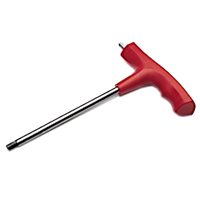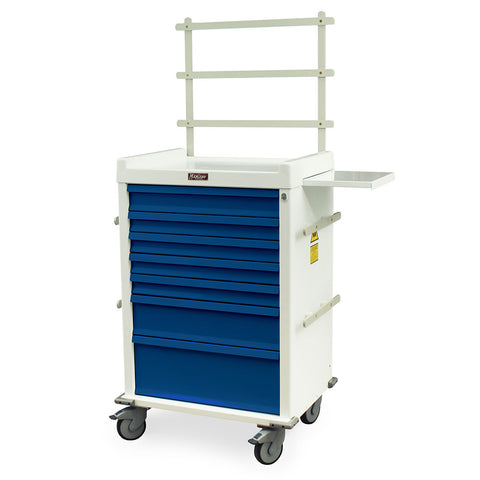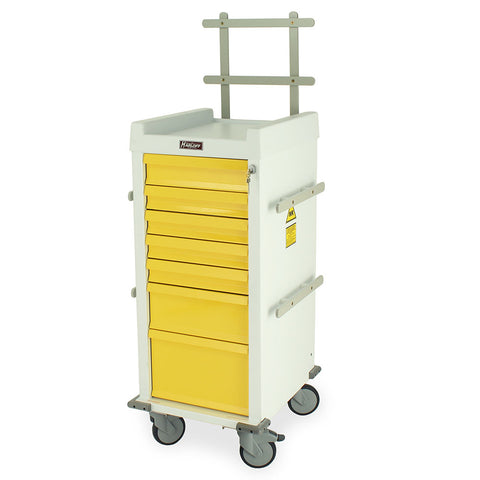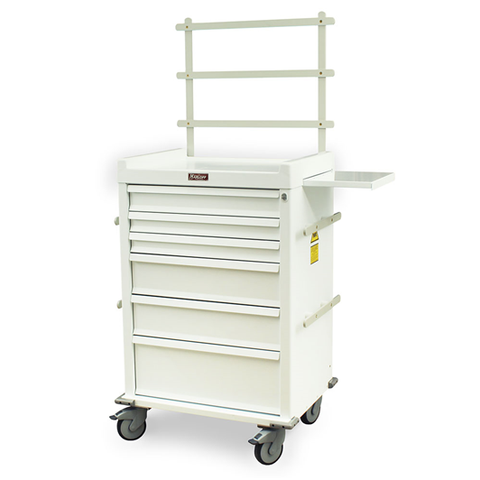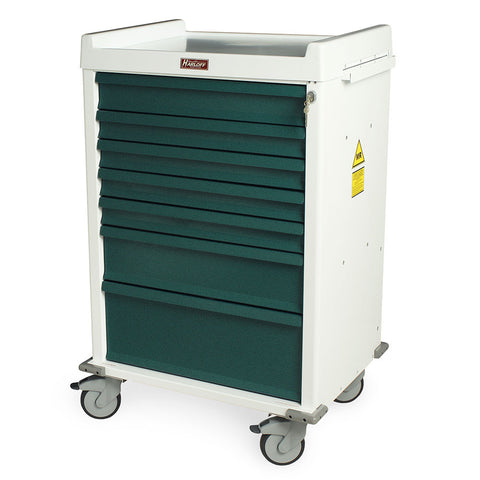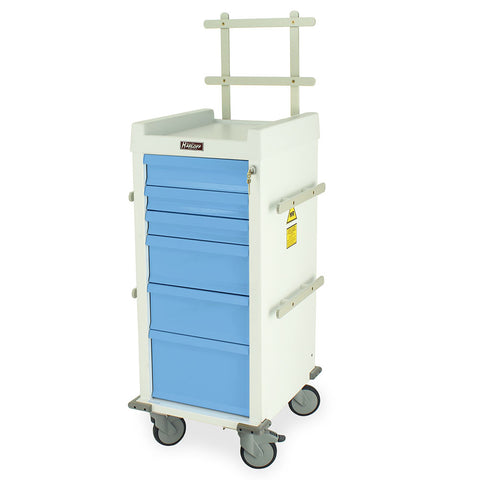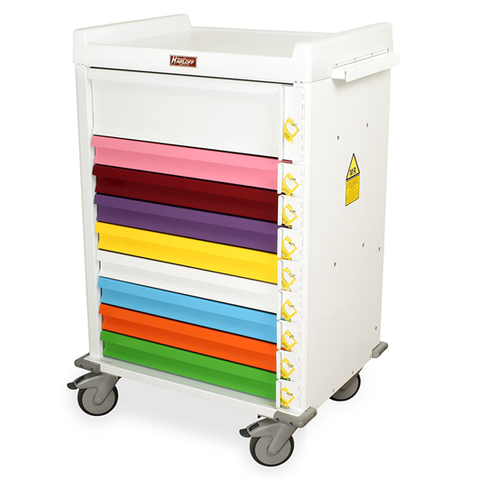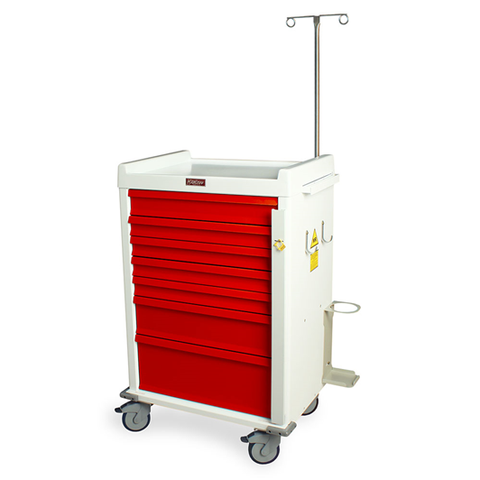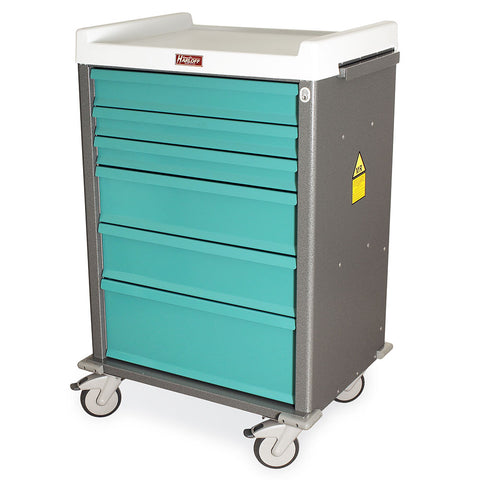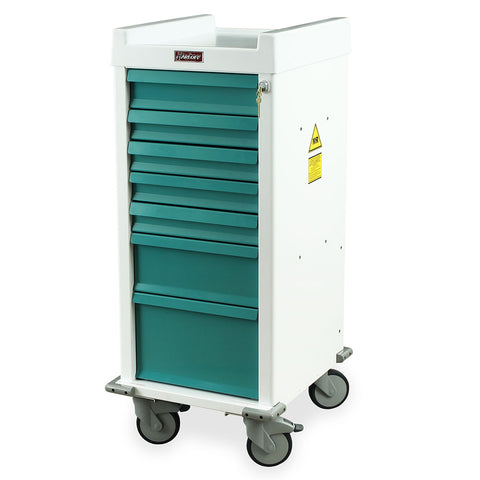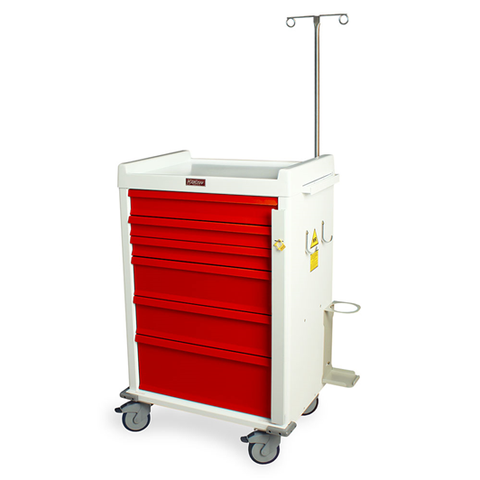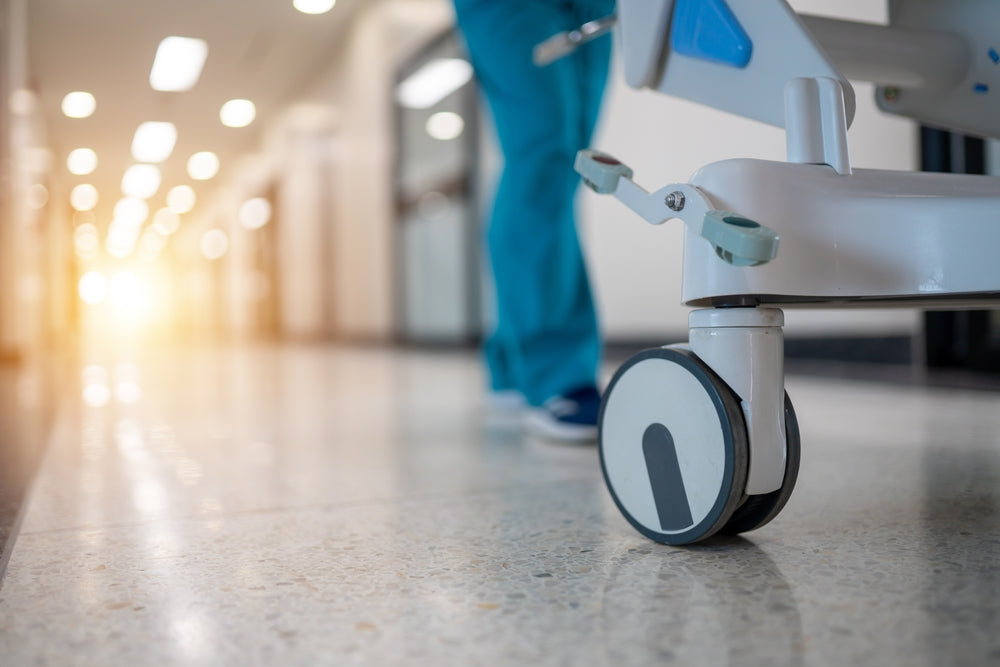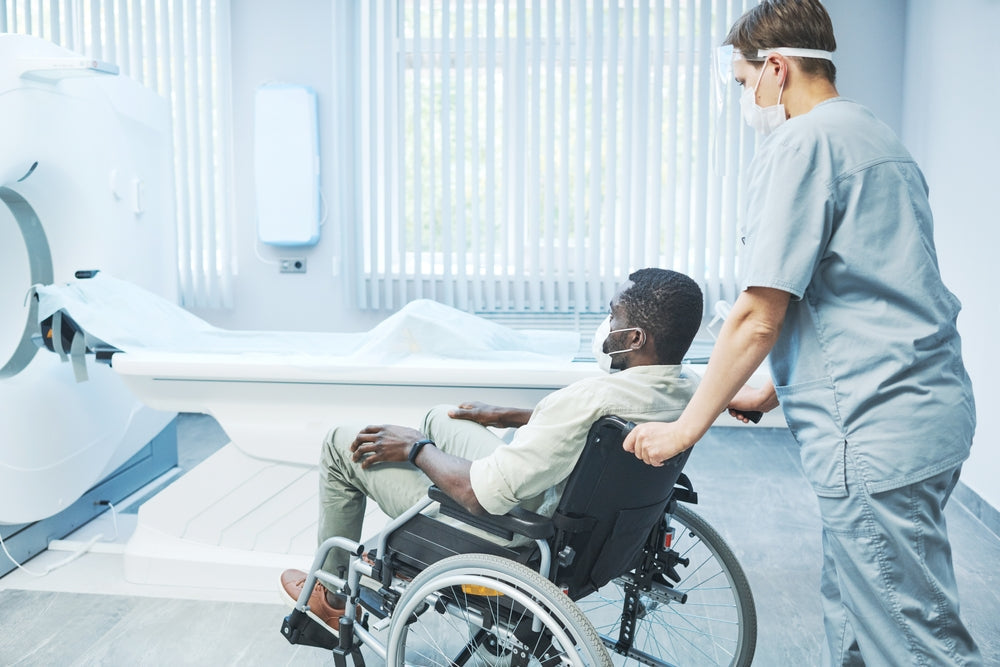When transporting patients into an MRI suite, safety, comfort, and compliance are top priorities. Using the wrong equipment can expose patients and staff to serious hazards — and damage expensive imaging systems. That’s why healthcare facilities are switching to MRI-Conditional stretchers (also known as MRI gurneys).
In this guide, we’ll highlight the top 5 MRI-Conditional stretchers available in 2025, explain what makes them safe and reliable, and help you choose the right stretcher for your facility.
Whether you’re managing a busy hospital, an imaging center, or an outpatient clinic, this comprehensive review will give you the knowledge to make a confident purchase.
Why MRI-Conditional Stretchers Are Essential in 2025
Understanding MRI Safety Requirements
MRI machines use powerful magnetic fields — strong enough to pull ordinary stretchers across the room like a magnet grabbing a paperclip. Any ferromagnetic (magnetic) metal near an MRI system can become a dangerous projectile.
An MRI-Conditional stretcher is built using non-magnetic materials, like aluminum, brass, titanium, or high-grade composites. These stretchers are ASTM F2503 certified, which means they’re tested to ensure no dangerous attraction to the magnet and no interference with image quality.
(Learn more in our other article: MRI-Conditional Stretchers: The Complete Buyer’s Guide)
Benefits of MRI-Conditional Stretchers Over Standard Stretchers
A standard stretcher might work fine everywhere else in a hospital — but not in an MRI suite. Using the wrong stretcher can:
-
Compromise patient safety by pulling into the magnet bore.
-
Damage MRI equipment, leading to expensive repairs.
-
Delay critical imaging, wasting staff time and harming patient outcomes.
By contrast, an MRI-Conditional gurney:
-
Keeps patients secure and comfortable during transport.
-
Meets strict safety standards to prevent accidents.
-
Provides smooth maneuverability in tight corridors and MRI rooms.
(See our related article: MRI Stretcher vs. Standard Stretcher: What’s the Difference?)
How MR Conditional Labeling Protects Patients and Staff
Medical equipment is labeled as MR Safe, MR Conditional, or MR Unsafe:
-
MR Safe – completely non-magnetic, no risk at any field strength.
-
MR Conditional – safe under specific conditions (e.g., up to 3 Tesla).
-
MR Unsafe – should never enter an MRI room.
Most stretchers are MR Conditional, meaning they’re safe if used as directed — for example, in a 1.5T or 3T MRI environment. This labeling helps technologists and nurses make quick decisions, ensuring safety for both patients and staff.
(See our article: What Makes a Stretcher MRI-Conditional?)
How We Selected the Top 5 MRI-Conditional Stretchers
Criteria for Evaluation
We reviewed MRI Med’s stretcher lineup using criteria that matter most to hospitals and imaging centers:
-
Non-magnetic construction and ASTM F2503 compliance
-
Weight capacity and durability
-
Patient comfort and safety features
-
Maneuverability in tight spaces
-
Cost-effectiveness and long-term value
Importance of ASTM F2503 Certification
All stretchers on this list are ASTM F2503 compliant, which is the gold standard for MRI safety testing. This certification confirms:
-
Minimal magnetic attraction
-
No heating or interference during MRI scans
-
Clear labeling of MR Conditional parameters
(See our guide: Why MRI Stretchers Are Non-Magnetic – Explained)
Key Features That Influence Choice (Comfort, Maneuverability, Durability)
When evaluating stretchers, practical features matter just as much as safety. We looked closely at:
-
Mattress padding and side rail design for patient comfort.
-
Wheel design for smooth rolling and precise steering.
-
Height adjustment for staff ergonomics.
-
Weight ratings to ensure suitability for different patients.
Top 5 MRI-Conditional Stretchers in 2025
Here are MRI Med’s best options for 2025 — all fully MRI-Conditional and designed for demanding healthcare environments.
1. Adjustable Height MRI Med Stretcher
Pricing and Models: Contact MRI Med for a quote — pricing typically starts around $9,999.00 depending on configuration.
Key Features:
-
Fully non-magnetic construction for use up to 3 Tesla.
-
Height adjustable to reduce staff strain during transfers.
-
Premium mattress for improved patient comfort.
-
Swivel casters for effortless movement in narrow halls.
Pros:
-
Ergonomic for staff
-
Strong and stable frame
-
Smooth maneuvering
Cons:
-
Higher price point than fixed-height models
Ideal Use Cases:
Perfect for hospitals and imaging centers that handle a high volume of patients, including those with mobility challenges.
2. Non-Ferrous Height Adjustable Stretcher
Pricing and Models: Request a quote — pricing generally begins at $12,995.00.
Key Features:
-
Lightweight aluminum and brass components.
-
Dual side rails for patient security.
-
Easy height control for smooth transfers.
Pros:
-
Easy to push and steer
-
Corrosion-resistant materials
-
Reliable braking system
Cons:
-
Slightly lower weight capacity than bariatric models
Ideal Use Cases:
Well-suited for outpatient MRI centers or smaller facilities that need an affordable yet fully compliant solution.
3. MR Non‑Ferrous Stretcher
Pricing and Models: Contact MRI Med for a quote — pricing starts around $4,195.00.
Key Features
-
Fully non-ferrous construction for use up to 7 Tesla
-
Weight capacity of 500 lbs
-
Adjustable headrest from 0° to 75°
-
Sturdy aluminum frame with fold-down side rails
Equip Your Team with Tools They Can Trust
Get high-quality, MRI-dedicated equipment that supports safer scans, better positioning, and smoother patient care.
View Trusted Products -
3-inch high-density mattress
-
Rubber bumper along edges
-
Four 5-inch locking casters
Pros
-
Fully non-ferrous and safe for high-field MRI systems
-
High weight capacity offers broad patient compatibility
-
Adjustable headrest enhances patient positioning and comfort
-
Durable yet lightweight design aids staff handling
-
Locking casters provide secure placement during scans
Cons
-
Slightly heavier at 135 lbs, potentially requiring multiple staff members to move
-
Lacks hydraulic height adjustment found in premium adjustable models
Ideal Use Cases
For imaging centers and hospitals seeking reliable, all-purpose MRI transport.
4. MRI Med Bariatric Stretcher
Pricing and Models: Typically starts around $4,195.00 — request a detailed quote.
Key Features:
-
Reinforced frame for higher weight capacity.
-
Wide mattress platform for patient comfort.
-
Strong locking casters for stability during transfers.
Pros:
-
Ideal for larger patients
-
Extremely durable
-
Secure rail system
Cons:
-
Heavier than standard models — may require two staff to maneuver
Ideal Use Cases:
A must-have for facilities treating bariatric patients or high-acuity cases requiring maximum stability.
5. MR Conditional Multi-Position PVC Gurney
Pricing and Models: Affordable entry-level model — pricing from $1,395.00.
Key Features
-
MR Conditional construction.
-
PVC frame.
-
Adjustable backrest.
-
Locking casters.
-
Rustproof design.
-
Weight capacity.
Pros:
-
Affordable MRI-safe transport solution.
-
Easy to clean and maintain.
-
Versatile positioning for patient comfort.
-
Non-magnetic and corrosion-resistant materials extend product life.
Cons:
-
PVC frames may not feel as premium as stainless steel or aluminum models.
-
Limited advanced features compared to fully height-adjustable stretchers.
Ideal Use Cases
An excellent choice for general patient transport to and from MRI suites, outpatient imaging centers, and smaller hospitals.
Comparing MRI-Conditional Stretchers
Price vs. Features Comparison
Premium stretchers cost more but offer better ergonomics and long-term durability. Entry-level models save money upfront but may lack advanced adjustments.
Weight Capacity and Dimensions
-
Bariatric stretchers handle heavier patients safely.
-
Pediatric models are smaller for child patients.
-
Standard models balance weight and maneuverability.
Maneuverability and Ergonomics
Look for swivel casters, central locking brakes, and adjustable height to reduce strain on staff and allow easy navigation through MRI corridors.
Patient Comfort and Safety
Consider mattress thickness, side rails, and smooth frame design to keep patients comfortable and secure during transport.
How to Choose the Right MRI-Conditional Stretcher for Your Facility
Factors to Consider Before Purchasing
-
Patient population (adult, pediatric, bariatric)
-
MRI field strength (1.5T or 3T)
-
Space constraints in hallways and suites
-
Budget vs. feature requirements
Common Mistakes to Avoid
-
Buying non-certified equipment.
-
Choosing a stretcher with insufficient weight capacity.
-
Ignoring staff ergonomics, leading to injuries.
Recommended Models Based on Use Case
-
High-volume hospitals: Adjustable Height MRI Med Stretcher
-
Budget-focused clinics: MRI Med Transport Stretcher
-
Bariatric care: MRI Med Bariatric Stretcher
FAQ
-
Are these MRI stretchers compatible with all MRI machines?
Yes. All MRI Med stretchers are safe for 1.5T and 3T systems, the most common MRI field strengths.
-
How do I maintain an MRI-Conditional stretcher?
Regularly clean with non-corrosive disinfectants, check wheel alignment, and inspect brakes.
-
Can MRI stretchers be used outside the MRI room?
Absolutely. These stretchers work anywhere, not just in MRI areas.
-
What is the average lifespan of an MRI-Conditional stretcher?
With proper maintenance, MRI Med stretchers typically last 10+ years.
-
How do I train staff to safely operate these stretchers?
Provide manufacturer training and annual refreshers to ensure compliance.
